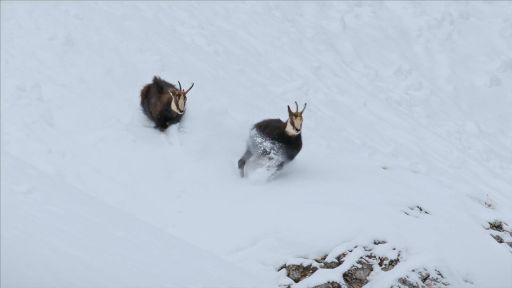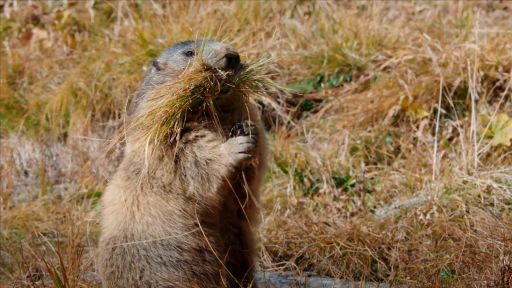Spanning 750 miles from the Mediterranean Sea to the Adriatic Sea, the Alps connect eight countries. From sea level to peaks rising higher than 12,000 feet, with many of the world’s environments located within the Alps’ boundaries, each mountain chain is more imposing and diverse than the next. Discover how Eurasian lynx, golden eagles, ibex, griffon vultures and more face extreme seasonal fluctuations – from the volatile thunderstorms and landslides of summer to the avalanches and frozen temperatures of winter – in this epic two-part documentary event. On every mountain slope, ridge or meadow, a natural world drama plays out as animals fight for survival in Europe’s majestic Alps.
In Part Two of “The Alps,” experience the hostile and bitter cold ecosystems of the Alps, shaped by blizzards and avalanches.
Buzzworthy Moments:
- A family of marmots prepares for their upcoming hibernation in a den 6 feet underground. As they prepare for their 6-month sleep, marmots dramatically lower their body temperature and survive on their body’s storage of fat and water. They only wake once every 2 weeks to rev up their heartbeat and visit a nearby tunnel used as a toilet.
- The Eurasian lynx stalks its favorite prey, the roe deer, by working silently and stealthily to take it by surprise. Lynx are Europe’s largest cat species and beginning to return to the Alps after nearly a century.
Noteworthy Facts:
- Mont Blanc is the highest mountain in the Alps, spanning 3 countries. Its granite ramparts distinguish it from other peaks. Mont Blanc’s ranges rose straight from the deep and are still rising, a phenomenon caused by glacial movement.
- The limestone Dolomites in Italy are half as high as Mont Blanc and were created as Africa’s collision with Europe pushed together an ancient tropical seafloor with the ancient skeletons of marine organisms into the sky.


